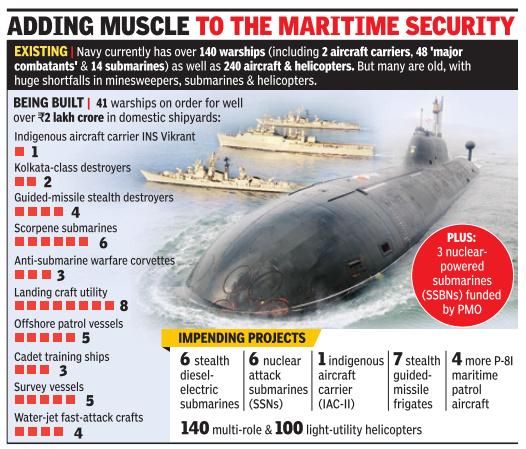NEW DELHI: The Indian Navy has finally selected the US Sikorsky S-70B Seahawk for its shipboard multi-role helicopter (MRH) requirement. Sixteen helicopters will initially be bought for $1 billion.
Sikorsky's tender was opened December 4 on the Navy Day, soon after the navy chief, Admiral Robin Dhowan, said that the government was fast-tracking various programmes for the modernization of the armed forces, and that some of the naval projects would be cleared "very soon."
Indeed so, the opening of the commercial bid at the ministry of defence (MoD), where the files have been held up for one reason or another for three years, was a Navy Day gift to the force.
Admiral Dhowan, who hosted a big Navy Day reception, did not say anything on the ceremonial occasion but was visibly in smiles and high spirits. Only a day before,
on December 3, he had told this writer that it was "comforting" to the navy brass to know that long-pending requirements were now being procedurally cleared on fast-track.
In an interview with India Strategic (
) before the Navy Day, the admiral indicated that the navy would likely exercise the option to buy the stipulated 16 helicopters along with an option for another eight. "To address critical shortages, the Indian Navy is progressing a case for acquisition of 16 MRH and I expect the commercial bids to be opened shortly. This project may be expanded
through an option clause to buy additional eight helicopters to meet any additional immediate requirements."
The navy is also buying 16 more Advanced Light Helicopters (ALH) helicopters from state-run HAL, he disclosed.
The Sikorsky deal is estimated at around $1 billion-plus.
Sikorsky's Regional Executive for India and South Asia, Air Vice Marshal Arvind Jeet Singh Walia (retd), said that he was delighted at Sikorsky's selection, pointing out that he had been working for eight long years for the company's participation in Indian military programmes. "We look forward to fruitful negotiations now to conclude this requirement, and then move on for other projects."
The company has already offered to build helicopters in India under transfer of technology (TOT) subject to US export control laws.
The Seahawk is a naval variant of the US Army's Black Hawk UH 60 helicopter, which has a proven track record in US military ventures in different parts of the world, including Afghanistan.
The navy had floated a tender for 16 helicopters with an option for another eight in 2008. Besides the United Technologies Corporation Sikorsky helicopter, European NH Industries NH 90 was also shortlisted for technical trials, which both of them cleared. But before the commercial bids could be opened, allegations of corruption erupted in Italy over AgustaWestland's VVIP helicopter deal with India. As AgustaWestland is part of NHI, its commercial bid was not opened.
Italy's Finmeccanica has a controlling stake in the Anglo-Italian AgustaWestland, which in turn is a partner with Airbus Helicopters and Fokker Aerostructures in NHI. For the time being, the defence ministry is not dealing with any company related to AgustaWestland.
The Seahawk 70B can be used for both advanced anti-submarine and anti-surface warfare to neutralize underwater and over-water threats. One key requirement is for amphibious assault role - and the machines will be customized for that.
It will have potent radars and weapons from leading global majors, including Raytheon, Telephonics, BAE Systems, GE (two power plants), French Thales and six
other partners. The helicopters will replace the Indian Navy's quarter-century-old Westland Sea King Mk 42 B/C fleet.
What exactly is on board though in terms of capability will be decided in negotiations likely to commence within weeks.
Significantly, at the navy chief's reception, a very well-done short film on the Indian Navy was presented, and its script had ample emphasis on naval aviation in
protecting India's offshore maritime interests.
As for manufacturing helicopters in India in accordance with the Government's new 'Make in India' policy, Admiral Dhowan said: “Towards this end, we have begun the process of analyzing the capability and potential of the Indian aviation industry to make aviation assets in India through (industry bodies) Confederation of Indian Industries (CII), Associated Chambers of Commerce and Industry of India (ASSOCHAM) and Federation of Indian Chambers of Commerce and
Industry (FICCI).
However as indigenous production could take some time to mature, it is "in the interim" that the navy is going in for acquiring helicopters from foreign vendors to "address (its) critical shortages”.
Air Vice Marshal Walia told India Strategic that as the number required is very small (16 + 8 (options), there cannot be any manufacturing India. But there is a 30
percent offsets clause, and Sikorsky will fully meet this obligation.



